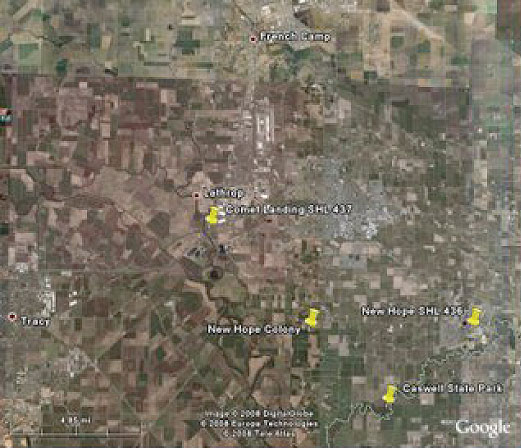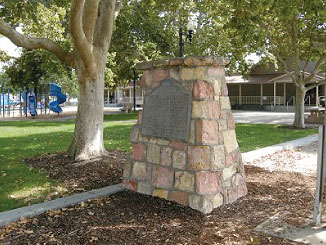New Hope

In the early autumn of 1846, Brannan rode into the San Joaquin Valley to check this out. At Marsh’s Landing (Antioch), Dr. Marsh convinced him of the feasibility of buying a discarded whaleboat, converting it into a sailing launch, and sailing up the San Joaquin. Brannan called a crew to convert the whaleboat (The Comet) and to take implements, sawmill irons, seed wheat, and a small flouring mill to “New Hope” on the Stanislaus. Twenty men of the Ship Brooklyn Saints were sent to establish New Hope, by planting wheat, vegetables, and redtop, a forage crop. The Comet landed at what would later become Mossdale, where the trail between Sutter’s Fort (Sacramento) and San Jose crossed the river. (A state registered landmark on State Highway 120 now marks the spot of this landing, which was the first launch to sail up the Sacramento River from San Francisco Bay).

Two men drove a yoke of oxen and a span of mules from Marsh’s Landing to the New Hope location, using a map drawn by the trapper, Ezekiel Merritt. The men fenced and planted about eighty acres of land, sawed lumber, and split shakes, and built three log houses.

 Heavy flood caused much loss and discouragement. The men were homesick and worried about their families in Yerba Buena, but they stayed and labored on.. (A registered landmark on Highway 99, records: “New Hope, First Wheat”New Hope Monument #1
Heavy flood caused much loss and discouragement. The men were homesick and worried about their families in Yerba Buena, but they stayed and labored on.. (A registered landmark on Highway 99, records: “New Hope, First Wheat”New Hope Monument #1
The small colony did not last, but has the distinction of raising some of the first wheat in the San Joaquin Valley. This and the other crops they planted started the move from the “rancho system” in California, of panting crops for their own use, to the “agricultural system” of raising crops for feeding others.
It is thought that the steel flour grist mill was eventually sold in 1849 to Austin Sperry , owner of a general store and feed yard in Stockton. The store and mill burned in 1852, because all of the records prior to 1852 were lost at that time, it is impossible to be proved the claim, but Sperry rebuilt a larger establishment the same year, which grew into the Sperry Flour Company, which is now a part of General Mills.
